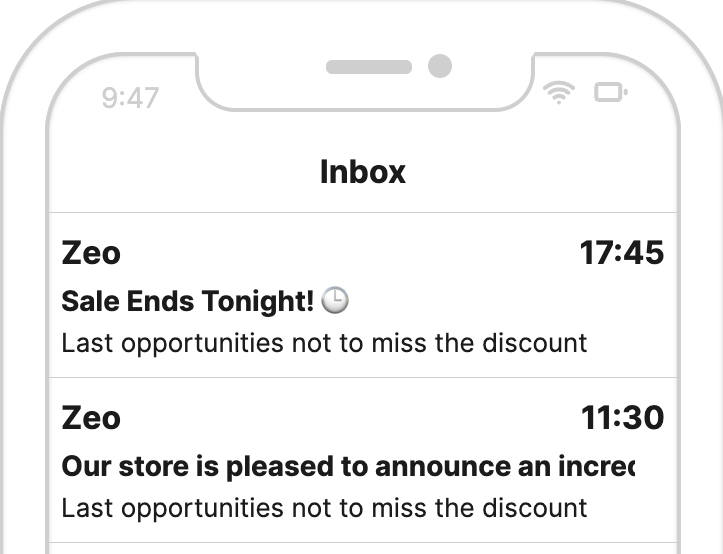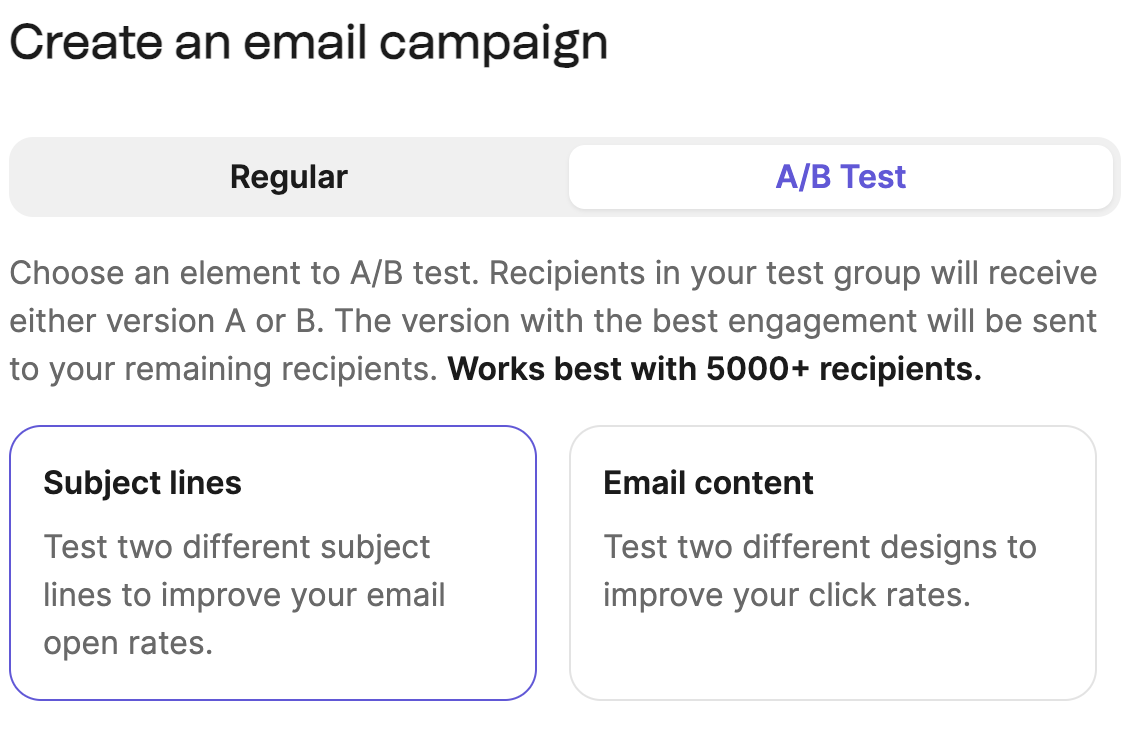7 Techniques to Increase Email Open Rate
In today's digital age, the effectiveness of email marketing campaigns is heavily dependent on the first stage of emails sent - open rates. Understanding and implementing strategies to increase these rates is crucial for any digital marketer looking to engage and expand their audience. In this article, I will discuss the key elements of creating compelling subject lines that can greatly increase your email open rates. You can also check out my article on the 6 metrics to track in email marketing afterward.

Importance of Subject Headings
The importance of subject lines in email marketing is undeniable. They act as a gateway to your email content and directly affect the open rates of your emails. With a compelling subject line, you can grab your audience's attention, arouse their curiosity, and motivate them to dig deeper into the email.
Creating an effective subject line requires strategy, creativity, and a good understanding of your audience's preferences and behaviors. This is not a blanket solution that guarantees success, so striking the right balance is crucial. Tailoring your approach to your audience's interests and needs is crucial to optimize engagement and open rates.
Strategies for Creating Effective Headlines
Creating effective subject lines is critical for capturing the attention of your audience amid inbox clutter. In this section, I'll explore and illustrate strategies designed to increase your email open rates through subject line optimization. Let's explore these methodologies, each tailored to align with your audience's unique preferences and behaviors, and lay the groundwork for a successful email campaign.
1. Optimize for Different Devices
In today's digital age, optimizing email subject lines for different devices is more important than ever. A staggering proportion of people are accessing their emails on mobile devices, making a mobile-first approach not only advisable but essential. Keeping subject lines short, between 21 and 40 characters, ensures visibility and readability across devices. Also, utilizing preview text to supplement the subject line with additional details or enticing offers can significantly increase engagement.

- Good Example: "Sale Ends Tonight! 🕒" - This headline message is succinctly conveyed to the user and includes an emoji to draw attention.
- Bad Example: "Our store is pleased to announce an incredible sale that's only available for a limited time!" - This subject line is too long and is likely to be cut off on mobile devices.
By striking the right balance between brevity and informative content, digital marketers can significantly increase the open rate of their emails, regardless of the device used to view them.
2. Ask a Question
Adding questions to email subject lines is a dynamic strategy that increases reader curiosity and leads to engagement. By asking relevant and thought-provoking questions, digital marketers can create a direct dialog with their audience and encourage them to open the email and seek answers.

- Good Example: "Do You Know the Secret to Instant Productivity Boost?" - This question is intriguing and hints at the information that awaits the reader, making it openable.
- Bad Example: "Would you like to know more about our products?" - This question, while seemingly simple, lacks specificity and interest. It offers no unique value or compelling reason for the reader to engage further.
The questions in the topics should tap into the target audience's specific interests or pain points and promise them meaningful content that is just a click away.
3. Capitalize on Intrigue and Curiosity
Leveraging intrigue and curiosity in email subject lines can dramatically increase open rates by tapping into people's natural desire to uncover the unknown. A subject line that reveals confidential information or private exchanges compels recipients to delve into the email's secrets.
- Good example: "What Your Competitors Don't Want You to Know..." - This topic suggests that by providing insider information, the recipient will gain an advantage by reading more.
- Bad Example: "Our Weekly Newsletter Inside" - This subject line lacks mystery and does not differentiate the email from the countless emails in the recipient's inbox, nor does it provide a compelling reason to open it.
Digital marketers can create irresistible appeal by crafting subject lines that hint at private or confidential information. However, to maintain trust and interest, the email content must deliver on the promise of the subject line.
4. Create a sense of urgency
Creating a sense of urgency through your email subject lines can significantly impact the rate at which your audience opens your emails. Using FOMO (Fear of Missing Out), you can tap into a powerful motivator that drives people to take action to avoid missing out on something valuable.

- Good example: "Last Chance! Grab 50% Off Before Midnight 🕛" - This thread conveys a tangible sense of urgency by specifying a deadline.
- Bad Example: "Discounts Available" - This subject line is too vague and lacks urgency. Because it doesn't convey a time-sensitive opportunity, it makes it easy for recipients to skim or put off reading the email, possibly leading to lower open rates.
Digital marketers can encourage immediate engagement by clearly communicating the limited-time availability of an offer or the exclusivity of a deal. However, it is crucial to truly utilize urgency, as overuse or misleading claims can reduce trust and interest over time.
5. Use Emojis
Emojis, when used wisely, can dramatically increase the appeal of email subject lines by adding a touch of personality and visual interest. They act as a visual cue, making emails stand out in a crowded inbox, and can convey emotions or messages more effectively than text alone.

- Good Example: "🔥 Hot Discounts This Weekend Only - Don't Miss Out!" - This subject line effectively uses an emoji to convey urgency and excitement, complementing the message and getting immediate attention.
- Bad Example: "Read Our Latest Blog Post 😴😴😴😴😴" - Here, the emojis are irrelevant to the topic and do not engage the reader.
The key to effective emoji use in email subject lines is to choose icons that align with your message and brand identity and enhance the clarity and appeal of the message without overshadowing the text.
6. Use Verbs or Numbers to Call to Action
Using actionable verbs or numbers in emails can attract attention by creating a clear expectation of what will happen next. This approach can significantly increase engagement by making content seem accessible and urgent.
- Good example: "Increase Your Sales in Just 30 Days - Try It Now!" - This subject line creates a compelling call to action, using both a number to set a timeline and an actionable verb to encourage immediate action.
- Bad Example: "Insights to Increase Sales" - Without urgency and action, this topic is less engaging and easy to miss in a busy inbox. Without a clear action or timeframe, it fails to generate interest or urgency.
7. Add Humor
Adding humor to email subject lines can significantly increase recipient engagement by differentiating them from a standard email. When done right, a humorous subject line can make your email stand out and increase shares and opens due to its memorable nature.
- Good example: "Wishing you a Sweet New Year: Great End of the Year Deals!" - This subject line cleverly plays on words, blending a common holiday celebration with a dessert reference, fitting perfectly with a dessert brand's holiday campaign.
- Bad Example: "Why did the email go to therapy? To get to the inbox!" - While this subject line tries for humor, it fails because it's not relevant to the content of the email or the audience's interest, and may confuse or alienate readers.
The key is to make your emails fun and engaging, ensuring that the humor resonates with your audience and reflects your brand's voice.
Testing and Optimization
Testing and optimizing email subject lines through A/B testing is a crucial strategy for improving email marketing effectiveness. You can test by sending two variations of an email subject line to a small segment of your target audience to see which version achieves higher open rates.

By analyzing which topics perform better, digital marketers can learn about their audience's preferences and tailor their content accordingly. This continuous cycle of testing, learning, and improving helps create more engaging email campaigns that resonate with the target audience, increasing open rates and engagement over time.

Debunking Myths
Addressing common myths surrounding email subject lines is crucial for effective email marketing. Contrary to popular belief, personalizing subject lines does not always lead to higher open rates. Similarly, using emojis or capital letters in subject lines does not automatically classify emails as spam. These elements can indeed increase engagement when used appropriately, but they are not universal solutions. Audience preferences can vary widely, so digital marketers should rely on data-driven results through testing to identify strategies that truly impact open rates.
Conclusion
In conclusion, mastering email subject lines is a critical element of successful email marketing. As we've looked at strategies ranging from optimizing for different devices to using humor, it's clear that understanding and engaging your audience is key. Regular A/B testing and debunking common myths will further refine your approach, ensuring that your emails not only reach inboxes but also engage recipients and drive action. By constantly adapting to the changing preferences of your audience and ensuring that your email campaigns reach the top in engagement results.
This content was created by Ahmet Can Kavak, Marketing Manager at Zeo.




